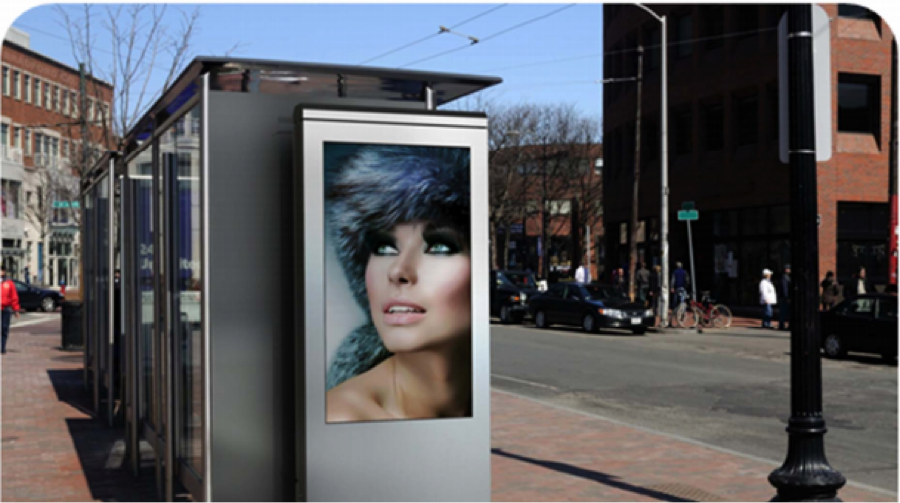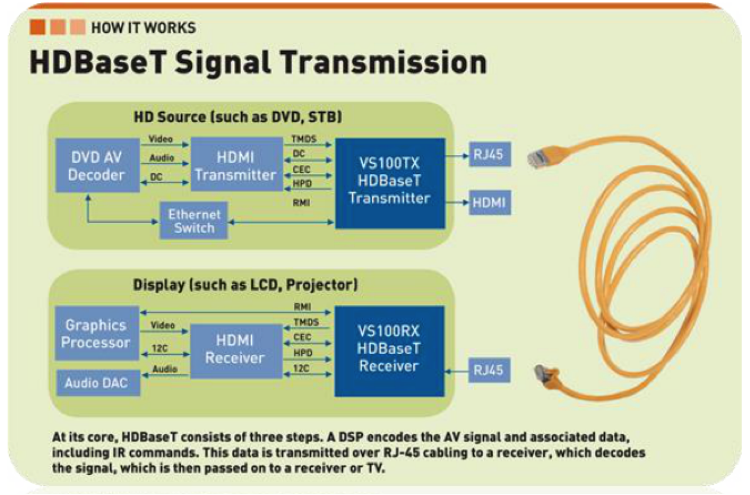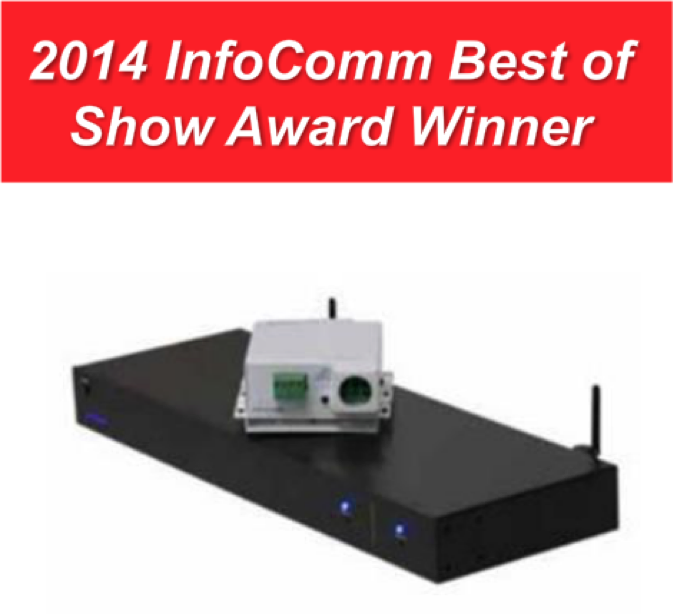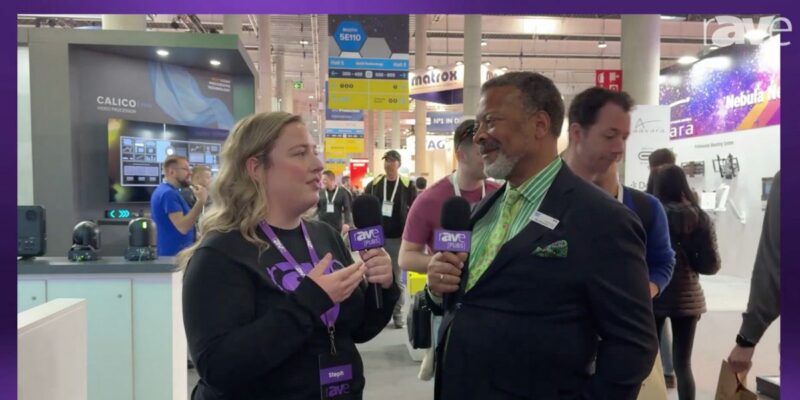Highlights of InfoComm 2014: Exploring the Latest & Greatest in AV
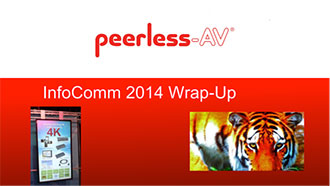 We’re always excited to see the latest and greatest advances in the commercial audiovisual industry at InfoComm.
We’re always excited to see the latest and greatest advances in the commercial audiovisual industry at InfoComm.
Once we packed our things in Vegas and were back home in Illinois, we sat down as a group and reflected on our experience at the show – what wow-ed, what we personally enjoyed and how we can make our products better to serve the needs of the industry. With so many great thoughts, we decided to host a webinar with New Bay Media to chat about the latest advances and trends in the industry we saw at the show. It was a great way for us to take a step back from the hustle and bustle of the show floor and reflect on the biggest takeaways from the event.
If you weren’t able to listen in, listen to the entire webinar here!
Here are some of the highlights:
4K Technology
The leapfrog technology at InfoComm was most definitely 4K displays, which offer four times the resolution of current standard HDTV. What is most amazing about the clarity is that you experience almost a perceptive depth to the displays due to the superior quality. When you stand in front of a 4K display, it feels like a 3D experience. The applications here are endless. One that is inherently obvious is the medical community embracing 4K desktop displays for diagnostic purposes, which will vastly improve medical imaging processes.
4K projectors also proliferated the show, with a variety of technologies incorporated, from 3D mapping to edge blending. NEC showed the first laser lampless 4K projector. The implications here are also very exciting; from not having to worry about a decrease in brightness to not having to regularly service a projector.
We also saw 4K technology deployed in kiosks for the first time. When doing so, integrators must incorporate anti-glare glass, as the brightness of the 4K can be quite overwhelming. Overall, it was very exciting to see the vibrant improvement in digital signage applications through the use of 4K. Even more exciting, if not almost unbelievable, is that 8K displays are also on the horizon.
Outdoor Digital Signage
There was an amazing array of LED displays at the show. Resolutions for LED displays are dramatically improving, however it will definitely be an application specific solution due to the high cost of LED boards.
The most cost effective solution is outdoor video walls that make use of weatherproof TVs and outdoor mounting systems for outdoor environments. As it stands now, the best configuration of an outdoor video wall is at least a 3×3 or 4×3 set up because what you are seeing in truly weatherproof outdoor displays is a larger bezel than you would in their indoor counterparts. And thus, content needs to be optimized for outdoor walls as well.
What’s also important in this area is that outdoor mounting solutions are used, as their fasteners are manufactured out of special coated steel and are not prone to oxidation. You also want to make sure you’re using weatherproof not weather resistant displays for longevity and serviceability. Look for displays that do not have filters that would need to be changed or ingress points in the displays that would collect condensation, bugs, or any other debris.
Digital signage kiosks are revolutionizing communication with customers and employees at amusement parks, quick-service restaurants, and more. They can reduce wait time through self-service applications and can display any information, including schedules, way-finding information, and even emergency alerts. For outdoor use, these kiosks must offer sufficient contrast for daylight readability.
Finally, a major consideration for outdoor digital signage is the media box itself. You must ask yourself this: How are you getting your content to your displays and how are you protecting it? You must enclose media players. You’ll want an IP68 rated box that will house your media, a protected power supply, and an opening for antennas because connectivity can be affected by a metal box.
Extra Large Displays
We saw size ranges increase dramatically at InfoComm, with a jump in the largest displays from 84 inch to 98 inch LCD panels. This gives us an opportunity to use large displays in applications where we would have traditionally used video walls. When you position a 98 inch display in landscape orientation you have the equivalent of four 42 inch displays for a video wall with the added benefit of not having any bezels or seams. Another thing that’s important to note with these displays is serviceability. Having a pop out mount reduces the need to have four service technicians come out to simply pull the display off the wall to only needing one, thus reducing the lifetime cost of the display.
Touch Technology
We saw more touch technology than any other show, especially in large format displays. We saw a lot of people walking straight up to these displays and intuitively interacting with them. This interactivity is key, especially for directories and wayfinding. People want to interact with content.
HDBaseT
We continue to be blown away by the increasingly fast progression of HDBaseT. The newest signaling standard has changed the rules of the game. In the past, we saw regular use of HDMI. However, HDMI is more a consumer standard that is limited in range. The great thing about HDBaseT is that it works on CAT 5. It allows for longer cabling based on protocol and signals and can be propagated further with repeaters. We are very excited about our HDBaseT integrated mounts and kits which will allow for a smooth integration experience for installers.
Wireless Transmission
Our Pico Broadcasting Technology is like a TV station in a box and offers many benefits for larger installations, including a signal range up to 350 feet, improved through-the-wall transmission, and virtually unlimited scalability. The system uses white space channels that are available and ATSC standards. Through the streaming software you can drag and drop content that will quickly be converted and populate a playlist. Then, all you have to do is press play to stream HD broadcast quality content to unlimited DTVs within range. It’s a real problem solver for shared spaces.
Our PeerSound Wireless Audio System was one on InfoComm’s Best of Show. It’s really the first product of its kind because we are not tethering you to any system. It will work with any existing audio receiver. The system allows you to send high quality audio to any speaker you choose up to 140 feet, with an in-wall or on-wall amplifier receiving the signal and going speaker-level out. It’s the ideal solution for locations where running speaker cable is less than ideal, and end users who are looking for higher quality audio.
Interested in learning more about the latest at the implications of the latest technology at InfoComm? Listen to the entire webinar here!


